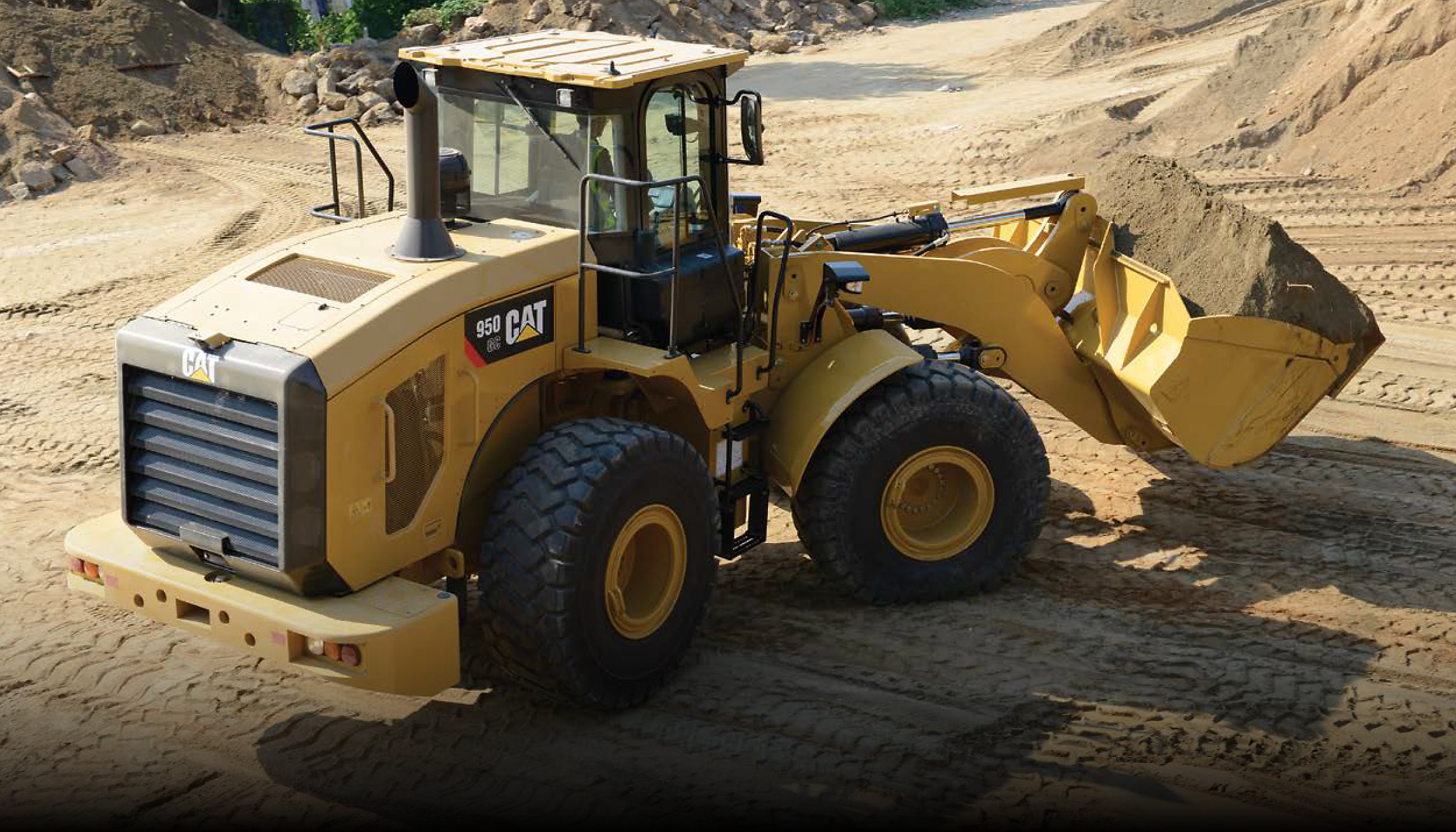

Sign In
Welcome! Sign In to personalize your Cat.com experience
If you already have an existing account with another Cat App, you can use the same account to sign in here
Register Now
One Account. All of Cat.
Your Caterpillar account is the single account you use to log in to select services and applications we offer. Shop for parts and machines online, manage your fleet, go mobile, and more.
Account Information
Site Settings
Security
CONFIGURING WHEEL LOADERS TO MATCH YOUR WORK LOADS
When configuring a wheel loader for purchase or rental to meet your agency’s needs, the first thing to consider is the primary application it will be performing.
Will you be utilizing the machine for basic bucket and fork work? If so, how much weight will you be lifting and how high will you need to lift it? It’s important to take a look at the machine’s full-turn static tipping load (FTSTL) and lift height. Here’s a breakdown of what you need to know:
- The FTSTL defines the amount of bucket material weight it will take for the machine to tip when the loader arms are level and the machine is fully articulated.
- The rated load for a bucket is 50 percent of the FTSTL and can be up to 80 percent of the FTSTL for a set of forks. It’s an essential guide as to how much the machine can safely lift while in operation. Depending on the ground conditions, you may be able to safely operate the machine at a reduced factor; however, using rated load as a guide is a good starting point.
- For example, if you need to be able to lift 6,000 pounds of material in the bucket, you want to select a machine with a 12,000-pound FTSTL and 6,000 pound-rated bucket capacity.
- To properly size the bucket on your wheel loader, a simple rule of thumb is to use the rated load (FTSTL/2) divided by the material density. This will give you your optimum bucket size.
- If your application requires loading a truck or hopper with tall height, you may want to consider a machine with a high-lift linkage option or purchasing a rollout bucket to help increase dump height.
A machine with higher horsepower doesn’t translate to a higher FTSTL and vice versa. If the loader is properly designed, horsepower will never translate into higher FTSTL.
If your application requires operation of hydromechanical attachments, such as brooms, snow blowers, power box rakes or cold planers, it is important to select a machine with an adequate amount of hydraulic horsepower necessary to operate that attachment at maximum performance. Features such as high-flow or four-valve hydraulics may be needed to run specialty tools.
Save Time, Reduce Wear, Improve Operator Comfort
Many advanced wheel loaders have special features designed to help reduce owning and operating costs, maximize machine performance and improve operator comfort. These technologies include:
- Ride Control – Uses the lift cylinders as shock absorbers for the payload to take bumps out of the road. This provides a more comfortable ride for the operator if your applications require a considerable amount of roading.
- Cylinder Snubbing – Slows down the implements before you reach the end of the cylinder stroke, creating a smoother operation and improving efficiency with better material retention.
- Rimpull Control – Helps minimize tire spin by enabling you to adjust the torque to match your underfoot conditions.
- Programmable Kickouts – Save lift and tilt positions and recall them with a simple motion of the joystick. On advanced wheel loaders, this can be done inside the cab to provide smooth, predictable loader arm movement.

